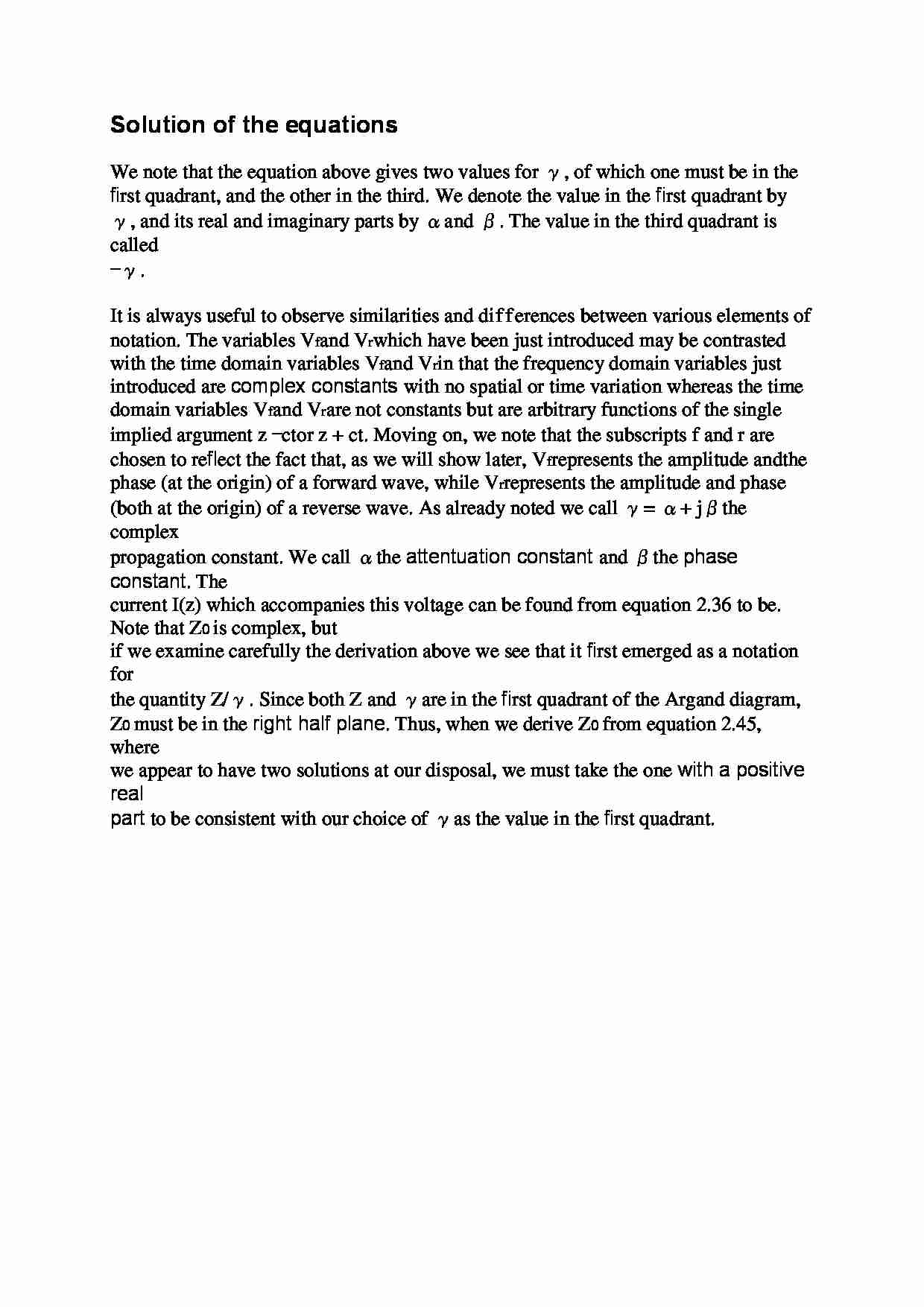
Solution of the equations We note that the equation above gives two values for γ, of which one must be in the
first quadrant, and the other in the third. We denote the value in the first quadrant by
γ, and its real and imaginary parts by α and β. The value in the third quadrant is called
−γ.
It is always useful to observe similarities and differences between various elements of
notation. The variables Vf and Vr which have been just introduced may be contrasted
with the time domain variables Vf and Vr in that the frequency domain variables just
introduced are complex constants with no spatial or time variation whereas the time
domain variables Vf and Vr are not constants but are arbitrary functions of the single
implied argument z − ct or z + ct. Moving on, we note that the subscripts f and r are
chosen to reflect the fact that, as we will show later, Vf represents the amplitude and the phase (at the origin) of a forward wave, while Vr represents the amplitude and phase
(both at the origin) of a reverse wave. As already noted we call γ = α + jβ the complex
propagation constant. We call α the attentuation constant and β the phase constant. The
current I(z) which accompanies this voltage can be found from equation 2.36 to be. Note that Z0 is complex, but
if we examine carefully the derivation above we see that it first emerged as a notation for
the quantity Z/γ. Since both Z and γ are in the first quadrant of the Argand diagram,
Z0 must be in the right half plane. Thus, when we derive Z0 from equation 2.45, where
we appear to have two solutions at our disposal, we must take the one with a positive real
part to be consistent with our choice of γ as the value in the first quadrant.
... zobacz całą notatkę



Komentarze użytkowników (0)